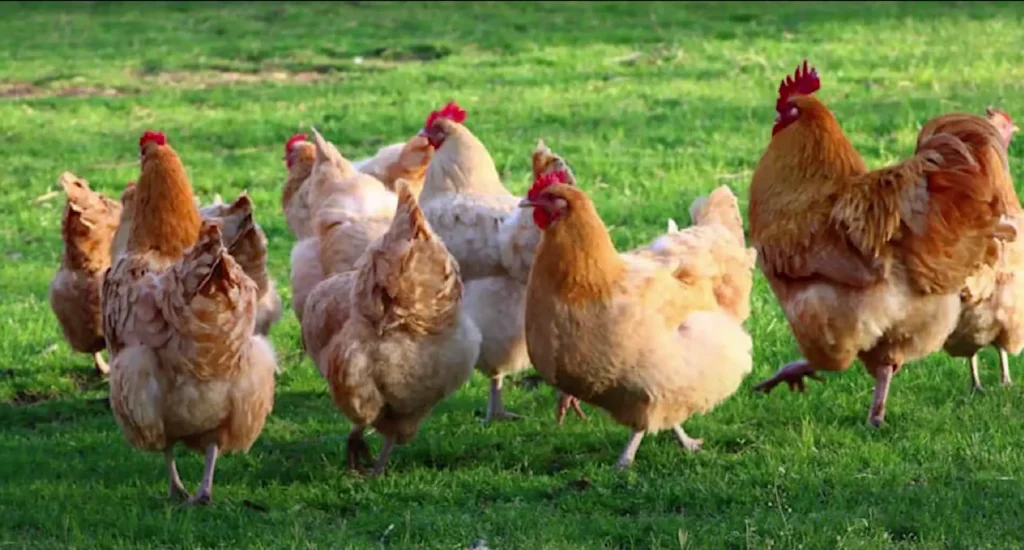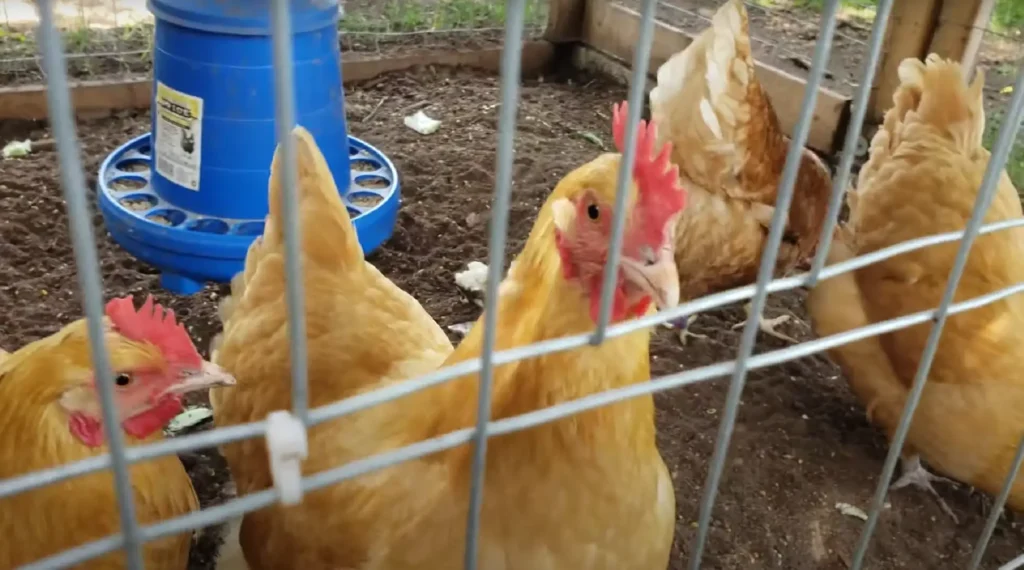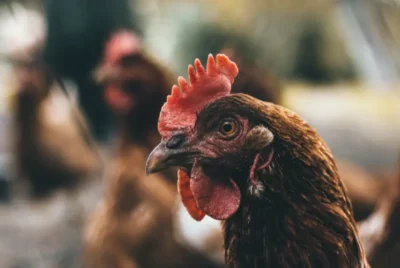Orpington Chickens: All You Need To Know About This Breed
Are you tired of constantly battling aggressive, high-maintenance chicken breeds in your backyard flock? Do you find keeping your chickens happy and healthy while maintaining a peaceful coop environment challenging? If you’re looking for a solution to these poultry-related pain points, it’s time to discover the enchanting world of Orpington chickens.
This guide will delve into everything you need to know about this remarkable breed that can help ease your worries and transform your chicken-keeping experience into a more enjoyable and rewarding endeavor.
Orpington Chicken History
The Orpington chicken breed has a history that dates back to the late 1800s in England. It was created by William Cook, who was not initially involved in poultry but had a practical vision for developing a versatile chicken breed.
Cook’s first successful creation was the black Orpington, introduced in 1886. The choice of black color was aesthetically appealing and practical, given the smog from coal-burning factories in England at the time. The black Orpington quickly gained popularity in the UK and the United States thanks to its excellent egg-laying abilities and meat quality.
Cook later introduced the buff Orpington, which also became immensely popular. Over time, additional color variations were developed, expanding the breed’s appeal. In the 1960s, the buff Orpington faced endangerment, but conservation efforts by dedicated enthusiasts helped revive the breed.
Today, Orpington chickens are known for their friendly disposition, making them popular choices for backyard flocks and hobbyists; they are appreciated for their egg-laying and meat-producing qualities and their attractive plumage in various colors.
Physical Appearance and Characteristics of Orpington Chickens
The Orpington is a large bird with soft feathers that make it look smaller than it is. Its fluffy feathers help it handle cold weather better than other chickens. Orpingtons are active if allowed to roam freely or kept in a confined space. They have a calm and gentle personality, but they might get picked on by more assertive chicken breeds because they’re not aggressive.
Physically, Orpingtons have a deep chest, a curved back, short legs covered in thick feathers, and either a single or rose comb (depending on local standards). Also, they have red wattles and white earlobes. Hens of this breed tend to become broody, so they want to sit on their eggs to hatch them and are considered good mothers.

Weight Standards for Orpington Chickens
According to APA standards:
- Cock: 10 lbs
- Hen: 8 lbs
- Cockerel: 8.5 lbs
- Pullet: 7 lbs
Australian standards express weights in kilograms:
- Cock: 4.55-6.35 kg
- Hen: 3.40-4.80 kg
- Cockerel: 1.41-1.58 kg
- Pullet: 1.19-1.36 kg
PCGB standards set weights at:
- Male poultry: 4.5 kg
- Female poultry: 3.6 kg
The Poultry Club of South Africa defines weights as follows:
- Cock: 5.5 kg
- Hen: 4.0 kg
- Cockerel: 4.5 kg
- Pullet: 3.5 kg
Orpington Chicken Color Varieties
Orpington chickens, known for their friendly disposition and excellent egg-laying capabilities, come in a stunning array of colors and patterns. These rem
Buff Orpingtons
The Buff Orpington is arguably the most popular variety among Orpington chickens. These birds have beautiful golden-buff plumage and gentle nature. Created in the late 19th century, they quickly became a favorite among backyard poultry keepers.
White Orpingtons
White Orpingtons, initially known as Albions, was developed by Godfrey Shaw. They are valued for their utility, laying large brown eggs and providing a delightful addition to any flock with their striking white feathers.
Black Orpingtons
The Black Orpington was the first variety of Orpington chicken. Their glossy black plumage and friendly demeanor make them a classic choice for poultry enthusiasts.
Cuckoo Orpingtons
Cuckoo Orpingtons were the creation of Elizabeth Jane, daughter of William Cook. Despite their unique coloring, they did not gain widespread popularity and gradually faded after World War I.
Blue Orpingtons
The Blue Orpington, introduced in 1910, boasts a beautiful blue-gray plumage. Although not an instant hit, they have gained immense popularity recently and are now highly sought after among chicken breeders.
Spangled Orpingtons
Spangled Orpingtons, an extremely rare variety, made their debut in 1900. These birds have striking spangled patterns on their feathers, making them a unique and prized addition to any flock.
Red Orpingtons
W. Holmes Hunt created the Red Orpington variety but has never achieved the same level of popularity as some other Orpington varieties. Nevertheless, their rich red plumage adds a vibrant touch to any flock.
Jubilee Orpingtons
Honoring Queen Victoria’s fiftieth year on the British throne, the Jubilee Orpingtons feature a unique mille-fleur-like patterning. These birds remain popular in their homeland and are cherished for their distinctive appearance.
Lavender Orpingtons
Lavender Orpingtons are a dreamy delight with their silvery-blue feathers that resemble a small fluffy cloud. This pale color extends down their beaks and legs, which have a slate-gray appearance. Lavender Orpingtons add a touch of serenity and elegance to any poultry flock, making them a sought-after choice among chicken enthusiasts.

Behavior and Temperament of Orpington Chickens
Orpingtons are relaxed, making them great companions for beginners and families. Their docile and gentle behavior adds to their charm, and their patient nature is a plus, especially when handling or caring for them. Orpingtons are exceptionally friendly, forming strong bonds with their caretakers, and with their fluffy feathers, they have a soft and inviting appearance,
Moreover, Orpingtons provide a steady supply of larger-sized, light-brown eggs for your household. Excelling as mothers, Orpington hens often go broody and care for their chicks with devotion. Their friendly and gentle nature also makes them well-suited for interaction with children.
Notably, Orpingtons are not particularly noisy, making them suitable for quieter environments, and their winter hardiness makes them well-adapted to colder temperatures, further enhancing their appeal.
Challenges of Caring Orpington Chickens
Despite their positive attributes, Orpington chickens come with certain challenges. One notable issue is their similar appearance, making it difficult to differentiate between individuals without leg bands or other identifiers. This poses a potential challenge for caretakers who may struggle to keep track of specific birds in their flock.
Moreover, Orpingtons can be vulnerable to bullying from more assertive or dominant chickens within a flock. Monitoring and understanding flock dynamics is crucial to ensure the well-being of Orpingtons in such situations.

Orpington Chicken Egg Production Characteristics
Egg Color and Size
Orpingtons consistently lay light brown eggs, occasionally described as having a “pinkish” hue. The egg size is typically large, contributing to their desirability for home use and potential market sales.
Egg Production Rate
The average laying frequency for Orpington hens is around 150-200 eggs per year. While some exceptional hens may lay up to 250 eggs annually, it’s important to note that individual breed variations and environmental factors can influence the rate of egg production.
Seasonal Variations
Like many chicken breeds, Orpingtons may exhibit seasonal egg production variations. They often lay more consistently during the warmer months with longer daylight hours. In colder seasons or during molt, egg production may temporarily decrease.
Early Egg Production
Orpingtons typically start laying eggs at around 5 to 7 months, although individual variations can occur. The initial eggs may be smaller, gradually reaching their full size as the hen matures.
Broodiness
Orpingtons have a broody nature, meaning they sit on their eggs to incubate them and hatch chicks. While broodiness can be desirable if you want to raise chicks, it may temporarily interrupt egg production.
Egg Quality
Orpington eggs are valued not only for their quantity but also for their quality. Their eggs have solid shells and rich, flavorful yolks. Proper feed nutrition, access to clean water, and a suitable coop environment contribute to the overall quality of Orpington eggs.
Management for Increased Production
To maximize egg production, provide a balanced and nutritious diet to ensure the hens receive adequate nutrients. Ensure access to clean water at all times, as dehydration can negatively impact egg production. Maintain suitable living conditions, including comfortable nesting areas and protection from extreme weather conditions.
Care Tips on Raising Orpington Chickens
Raising Orpington chickens is lots of fun but comes with some challenges. Making sure your chickens are happy and healthy takes a bit of know-how. Here are some easy tips to help you raise your Orpington chickens correctly and avoid common problems.
- Provide Adequate Space: Ensure each bird has at least 4 square feet of space inside the chicken coop and 10 square feet of outdoor chicken run space.
- Keep Them Safe: Predator-proof the coop and run using sturdy materials, locks, and regular checks for signs of predators.
- Clean Water: Using a high-quality waterer, change water daily or more frequently in hot weather.
- Nutritious Feed: Provide a balanced chicken feed containing protein, carbohydrates, fats, vitamins, and minerals.
- Treats in Moderation: Offer treats like fruits, vegetables, and mealworms in moderation to avoid nutritional imbalances.
- Grit for Digestion: Provide grit for proper digestion in a separate container or mixed with their feed.
- Dust Bathing Area: Allow for a designated dust bath area with sand, dirt, or wood ash for chickens to keep clean.
- Adequate Ventilation: Ensure good ventilation in the coop without causing drafts to prevent respiratory issues.
- Comfortable Nesting Area: Provide a comfortable nesting area with soft bedding material for laying eggs.
- Provide Perches: Offer roosting poles or branches for chickens to perch on.
- Socialize: Socialize with your flock to strengthen the bond and ensure their well-being.
Common Health Concerns of Orpington Chickens
Orpington chickens usually stay healthy, but you must watch out for some things. In cold weather, don’t wet their feathers with snow to avoid frostbite. Check for mites and lice regularly throughout the year. Give them dust baths to keep pests away.
Also, keep an eye on your hens’ weight. If they don’t exercise enough, they might become too big and have problems laying eggs, like prolapse and egg binding.
Orpingtons: The Fluffiest Chickens–Beauty and Beaks
Orpington chickens offer a captivating blend of charm, utility, and ease of care that makes them a standout choice for poultry enthusiasts. Whether you’re a beginner looking for a friendly and manageable breed or an experienced poultry keeper seeking versatility and reliability, Orpingtons has something to offer.
With the knowledge provided in this guide, you’re now well-equipped to start on your journey with Orpington chickens and experience the joys they bring to backyard poultry keeping.




